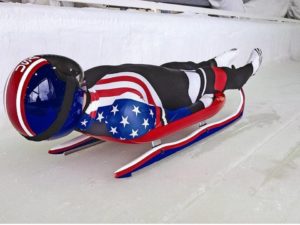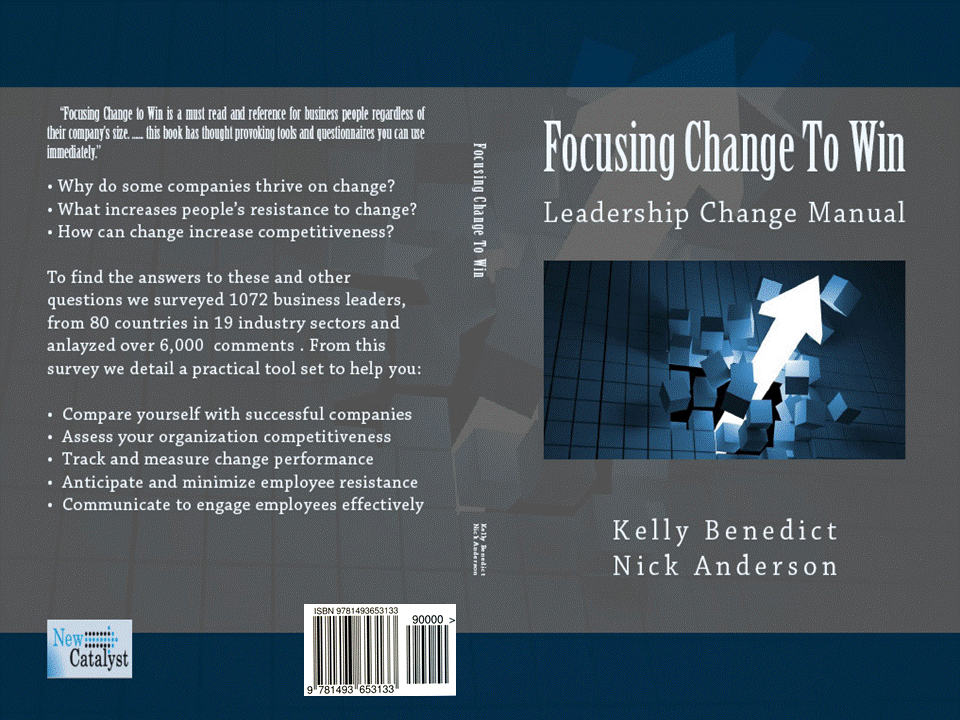
Undoubtedly the Speed of Change means many leaders will have to absorb great adversity while staying true to their intent and retaining cohesion. This underscores the criticality of moral qualities and shared values. So, who do you look for to meet this challenge? Here are nine leadership selection criteria for you to consider:
Nine Leadership Selection Criteria |
|||||
| 1. | Exercising Entrepreneurship | 2. | Taking Initiative |
3. | Valuing Local |
| 4. | Learning to Adapt | 5. | Distributing Decision Making |
6. | Accepting Risk |
| 7. | Having Nerve | 8. | Adapting Command Relationships |
9. | Establishing Trust |
1. Exercising Entrepreneurship
The Speed of Change challenges us to adopt a spirit of entrepreneurship which takes advantage and exploits opportunity, rather than maintaining the mindset of enhancing effectiveness and efficiency for its own sake
2. Taking Initiative
Faster decisions are essential to gaining the initiative. Initiative enables leaders to dictate the competitive context. By generating a higher competitive tempo through faster decisions, smaller and more nimble companies can wrest the initiative from an otherwise dominant players.
3. Valuing Local
Education and experience greatly contribute to speed and fidelity of decision. But, most of the time, local competent leaders will make a decisions on-par or better than remote leaders. Often,
“What is significant is not common, but is unique and relevant to specific circumstances. Decentralized decision-making based on superior situational awareness enables greater operational dexterity”. (Art Corbett)
4. Adaptive Learning
Like Combat, business today, needs adaptive learning environments. So, Leaders have to embrace that:
1. Making mistakes is normal, even for our best leaders, no matter how hard we work to ‘reduce risk,’ reality often defies probability in competitive, complex and emergent opportunities.
- Experienced and intuitive decision makers will make fewer mistakes, only the risk adverse will make none.
- Making mistakes is not a good means of judging and selecting leaders. What is far more significant is creating the potential for leaders to learn and adapt from mistakes. Leaders who don’t make mistakes have not shown the ability to recover and adapt.
- We must cultivate a climate of risk acceptance. Our leader development processes should offer opportunities to refine judgment in the face of risk, with wide potential for failure in training to
- identify and develop resilient leaders capable of coping with setbacks.
-
When you make a mistake, don’t look back at it long. Take the reason of the thing into your mind and then look forward. Mistakes are lessons of wisdom. The past cannot be changed. The future is yet in your power.
 Hugh White (1773 – 1840)
Hugh White (1773 – 1840)
2. Identifying ‘decision windows’ is key in time-competitive environments is a key skill.
- Judging “How much time do I have to gain more information and situational awareness before losing an opportunity to act?” The answer defines the “decision window” and frames possible alternatives.
- Judging the sweet spot in competitive decision making means an understanding the need to dictate and control tempo. While risking taking may be personality dependent, the ability for calculated risk taking is shaped by experience.
5. Distributing decision-making distributes risk, uncertainty and learning.
Decentralized decisions:
- Risk only a part of the organization, not the entire company,
- Means smaller units can inoculate other units by learning not to make the same mistake.
- Increased failure frequency accelerates learning and gives opportunity to assess the individual’s ability to recover, accept responsibility, learn and strengthen themselves.
6. Risk Acceptance

Competition and uncertainty make risk unavoidable.
“Risk acceptance is action in the face of uncertainty. Rashness is action in the face of improbability…”(Corbett)
- Calculated or prudent risk strives for advantage by timely exploitation or creation of favorable opportunity.
- Risk acceptance is an essential moral quality
- Risk tolerance reflects the character and nerve of a leader.
7. Having Nerve
“Nerve aptly conveys the moral strength, emotional resiliency and predatory calculation that steels resolve and tempers impatience”.
It’s the ability to absorb great pressure with conspicuous calm and composed judgment. Nerve is the character trait that enables other leadership traits to thrive.
8. Adaptive Command Relationships
When subordinate leaders gain mutual understanding they can empathize with their leader’s situation, understand the operational vision, and see the trade-offs they must make.‘Sharing the burden of command’ is the outcome of this established trust.
9. Established Trust
Dutiful subordinates ‘share the burden of command’ when mutual understanding enables them to empathize with the senior leader’s situation, understand their operational vision, and anticipate the trade-offs they must make.
What do you expect people to take away about leading at the speed of change?
When lives are lost because asymmetrical warfare’s complexity was not grasped, the Military responded. The result is a highly evolved command philosophy that produces disproportionate results. Their learnings are valuable to the corporate world, in summary:
1. Senior leaders must show the leadership…of trust, nerve and restraint to encourage initiative and a bias for action
2. Develop and select leaders who have the competitiveness to wrest advantage away from agile competitors
3. Build cohesion by developing a spirit of entrepreneurship based on leaders having the nerve to trust, the time to teach, and the confidence to grow reciprocal relationships.
4. Develop junior leaders through opportunities for professional development and apprenticeship that exercises their judgment and examines the consequences of their decisions.
For Help in Getting Your People on the Same Page ask Nick Anderson, The Crispian Advantage
E-mail I Web I Linkedin I Call 1+ (616) 745-8667
[contact-form subject=”Feedback from pdsgroup.wordpress.com” to=”nanderson@thecrispianadvantage.com”] [contact-field label=”Name” type=”name” required=”true” /] [contact-field label=”Email” type=”email” required=”true” /] [contact-field label=”Industry” type=”text” /] [contact-field label=”Feedback” type=”textarea” required=”true” /] [/contact-form]
© Copyright All Rights Reserved, The Crispian Advantage and Walk the Talk – A Blog for Agile Minds, [2010-2012]. Unauthorized use and/or duplication of this material without express and written permission from this blog’s author and/or owner is strictly prohibited. Excerpts and links may be used, provided that full and clear credit is given to Nick Anderson, The Crispian Advantage and Walk the Talk – A Blog for Agile Minds with appropriate and specific direction to the original content.


